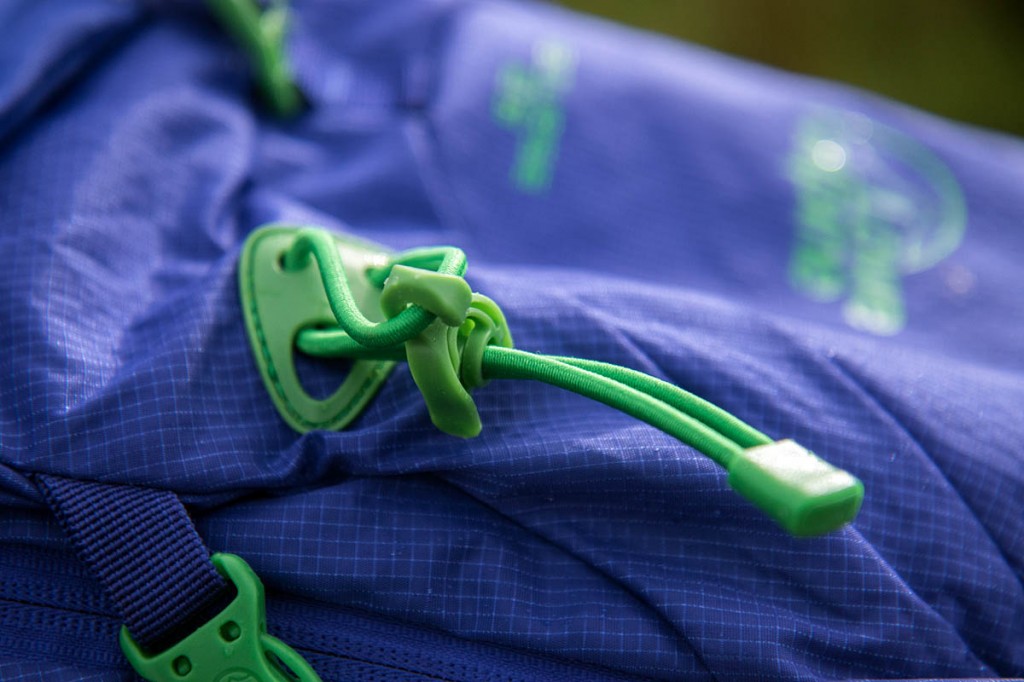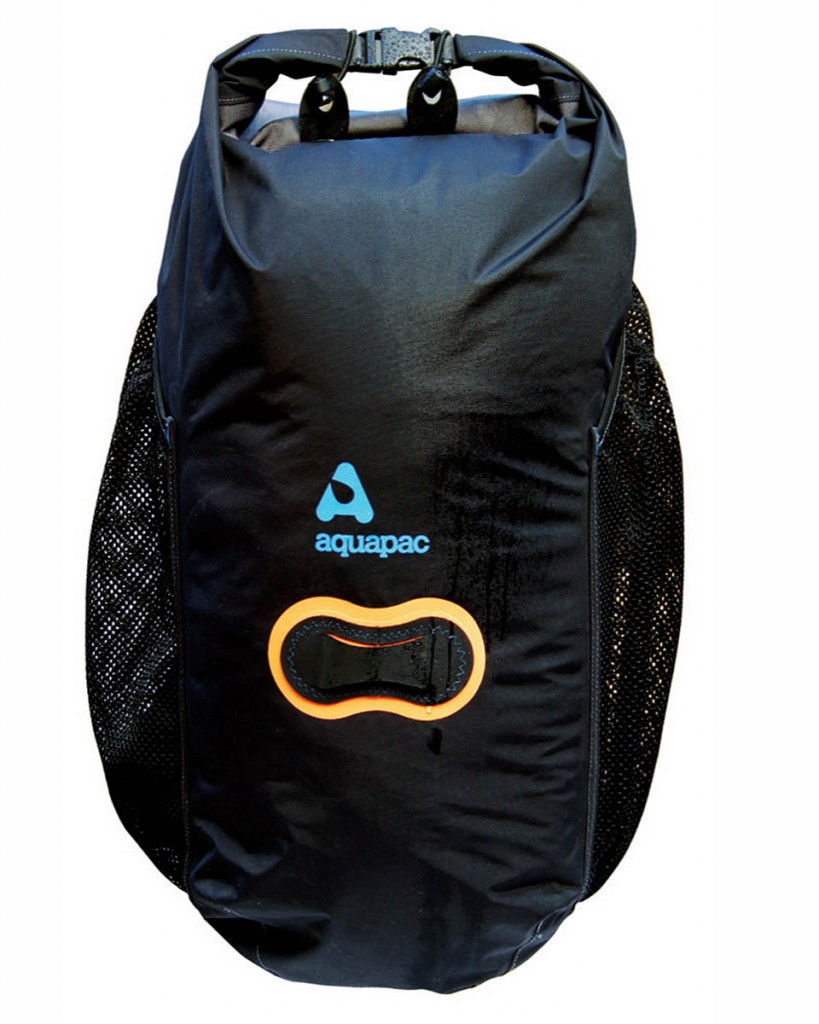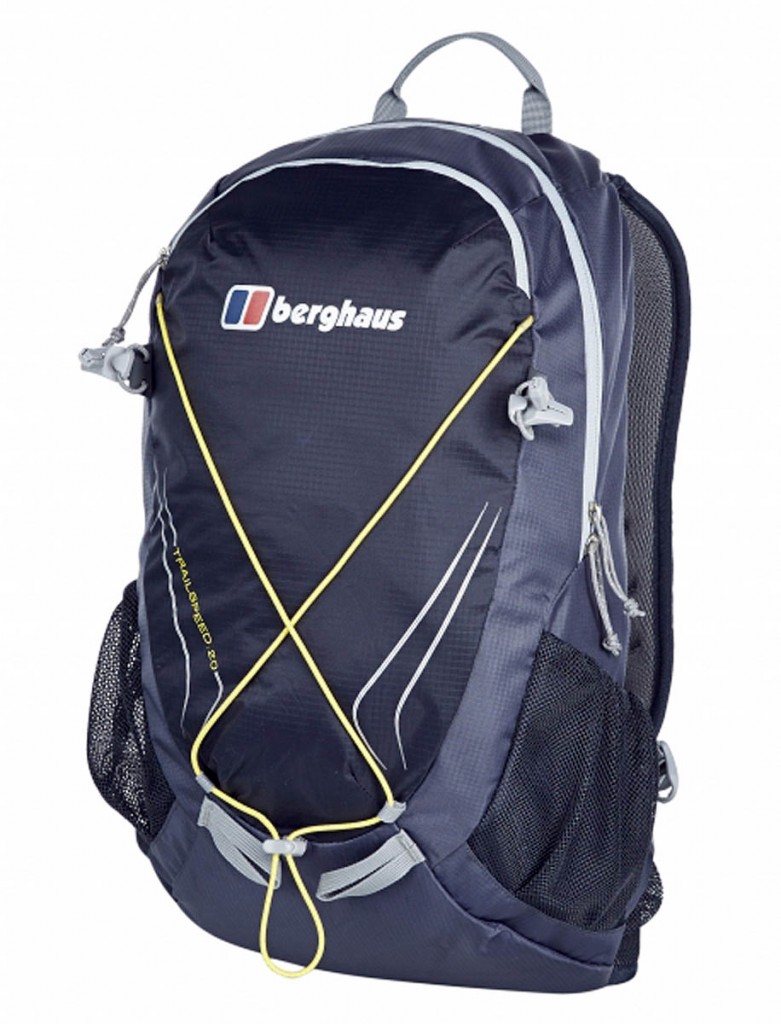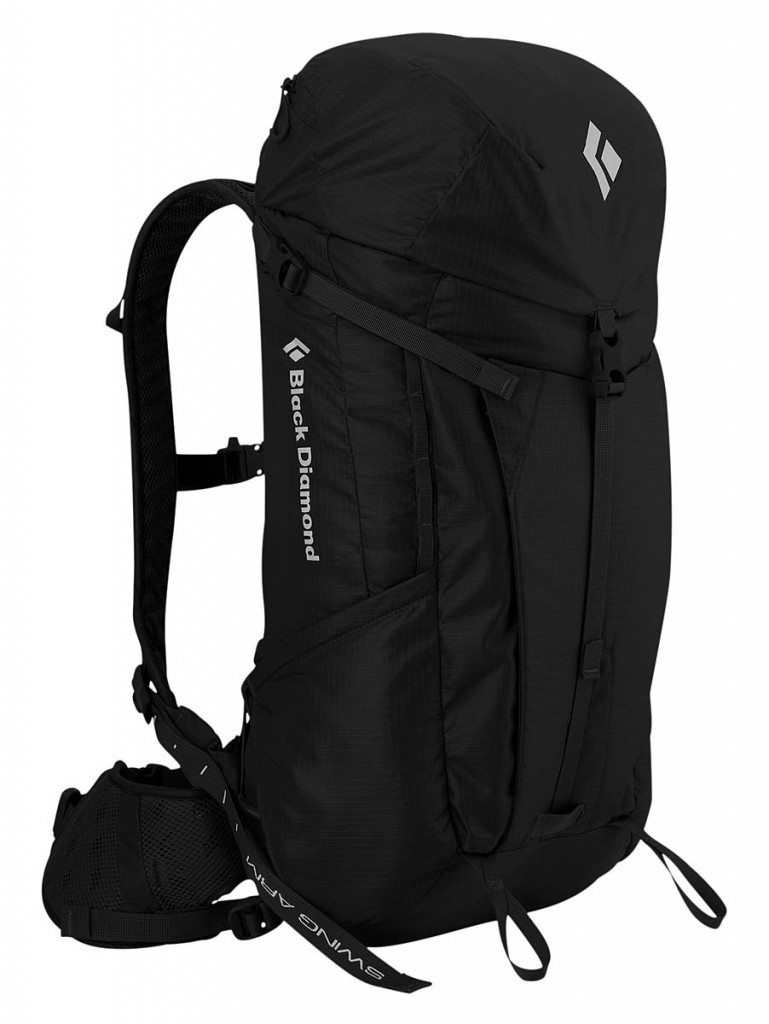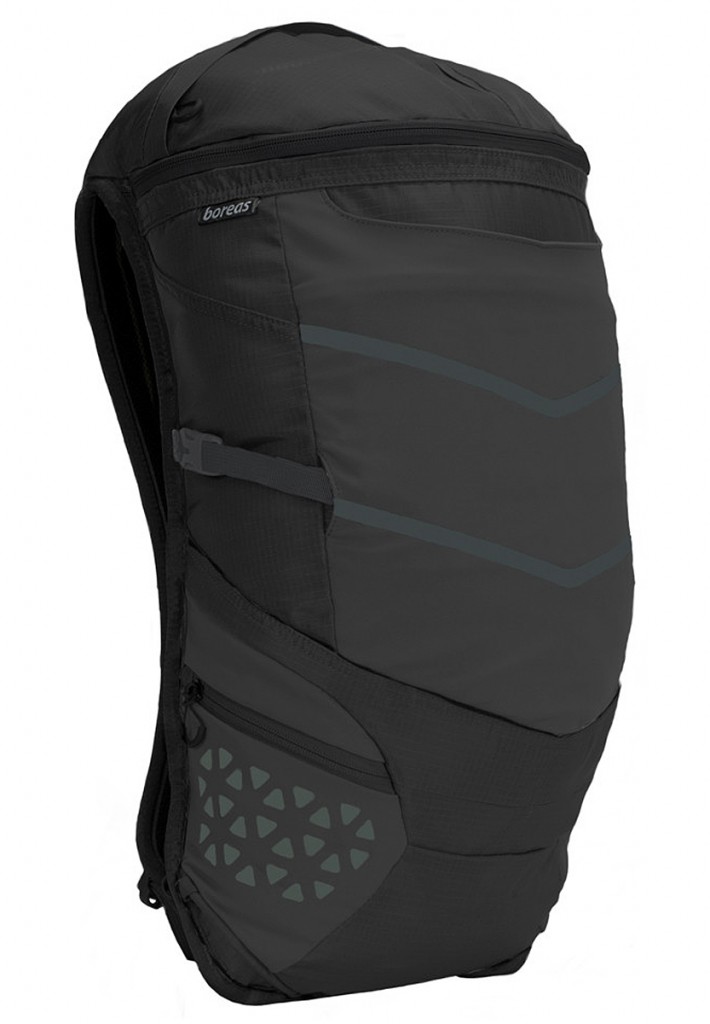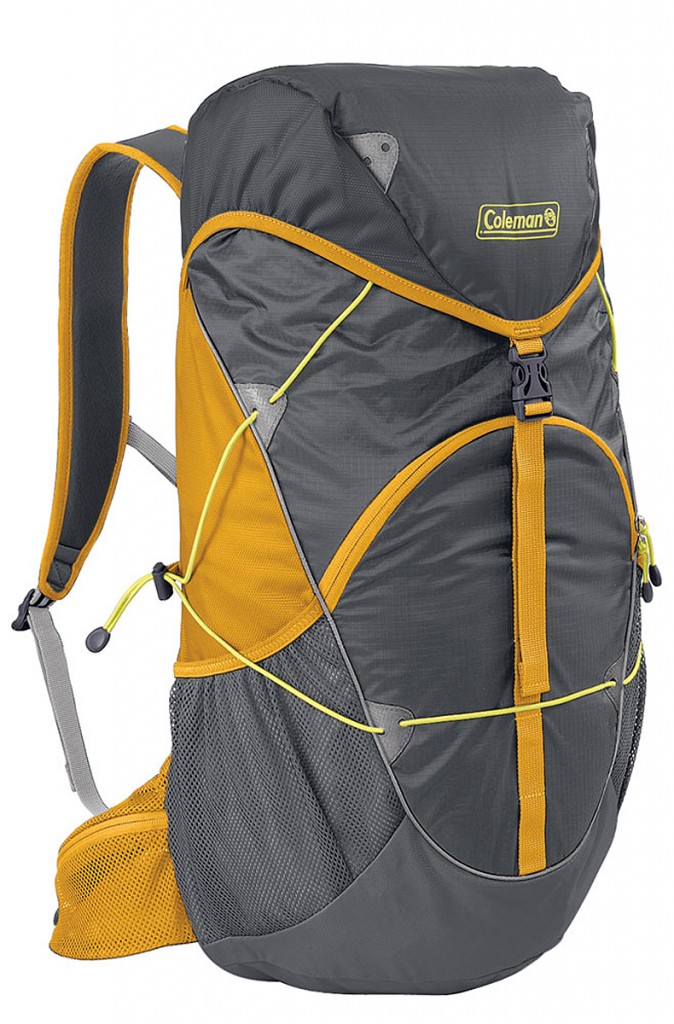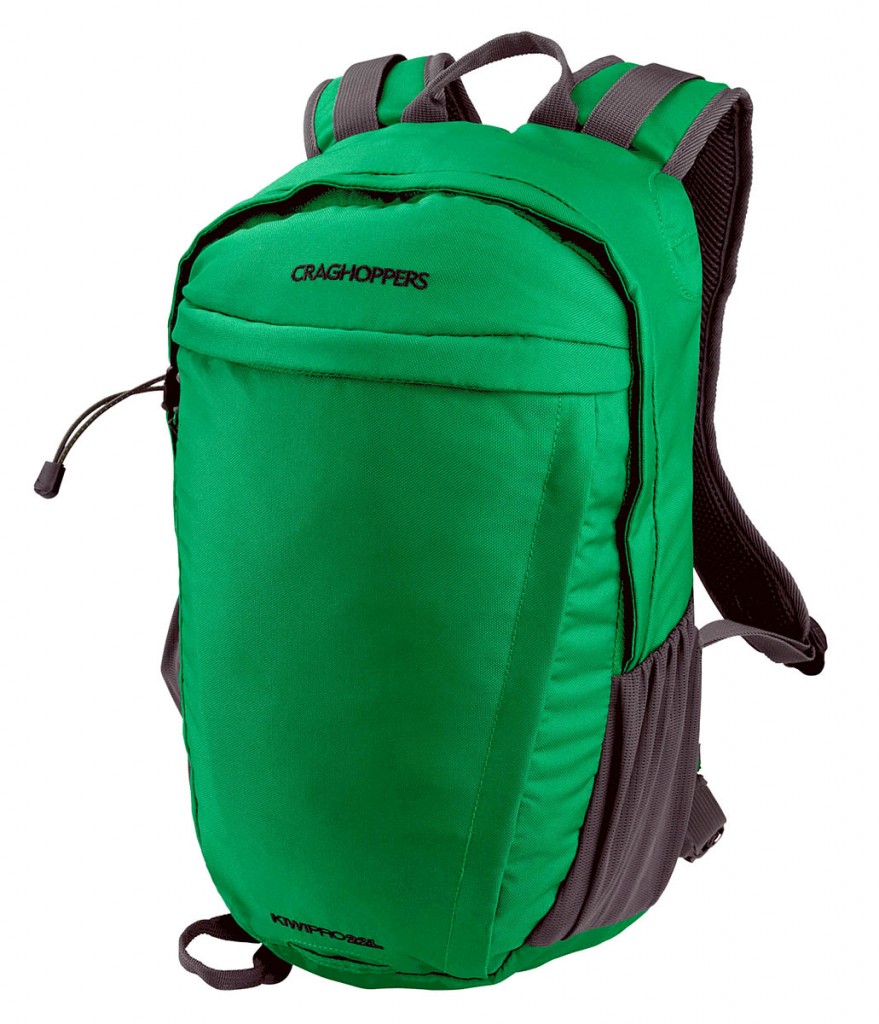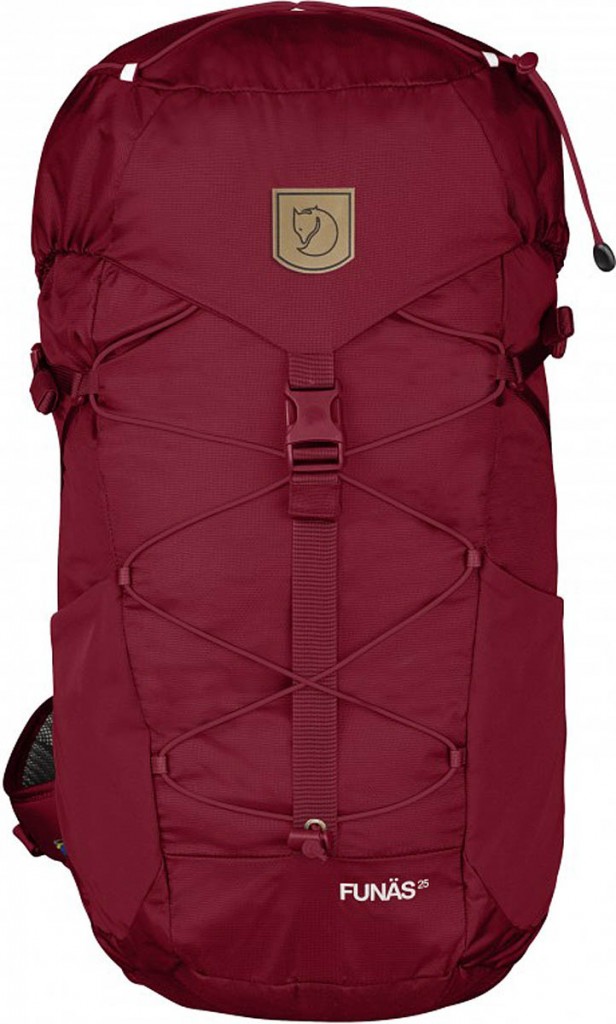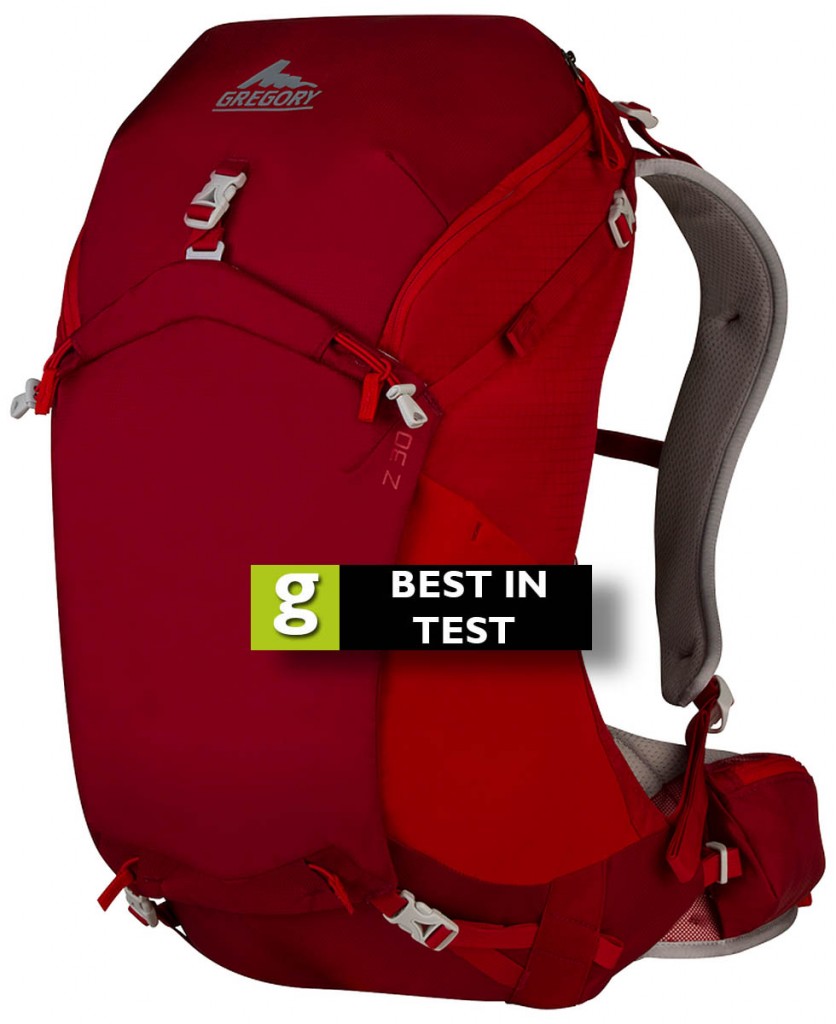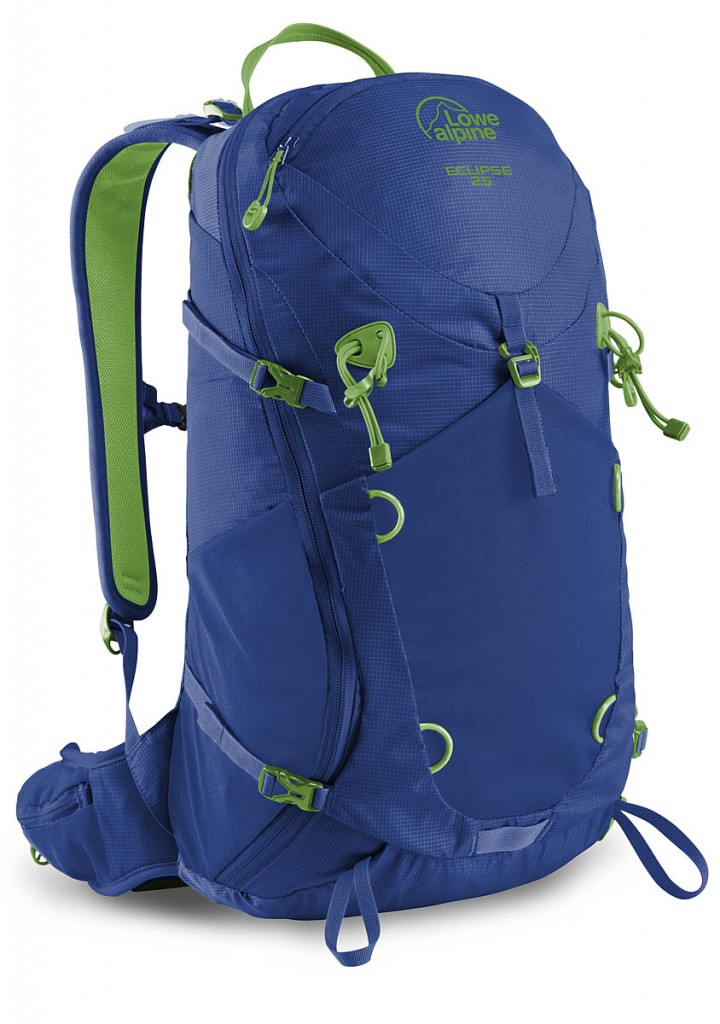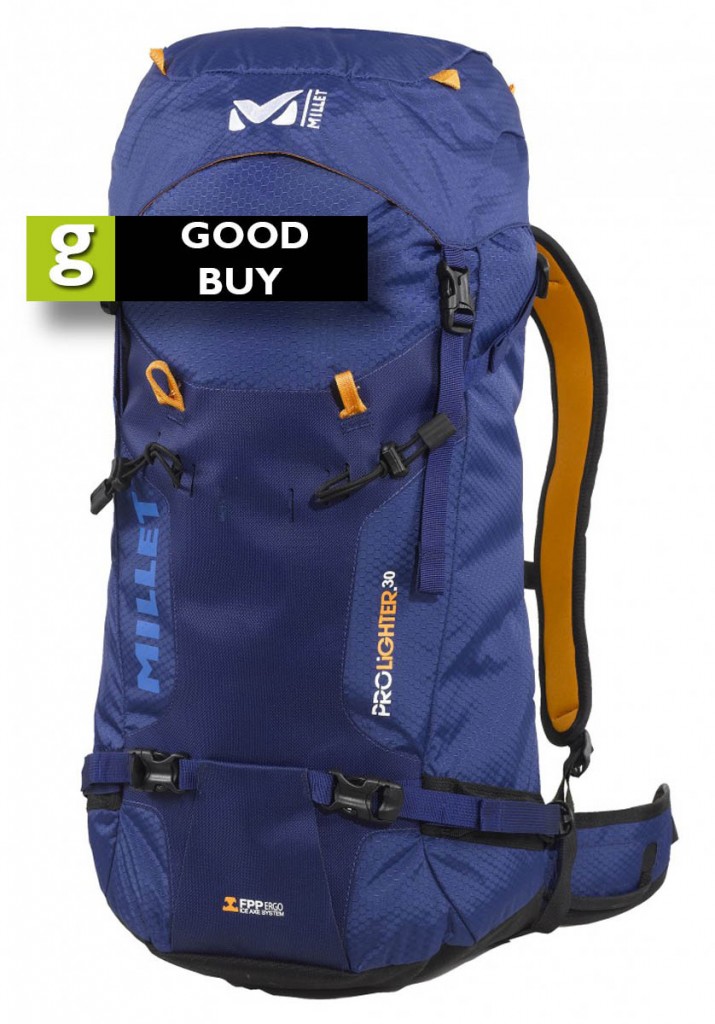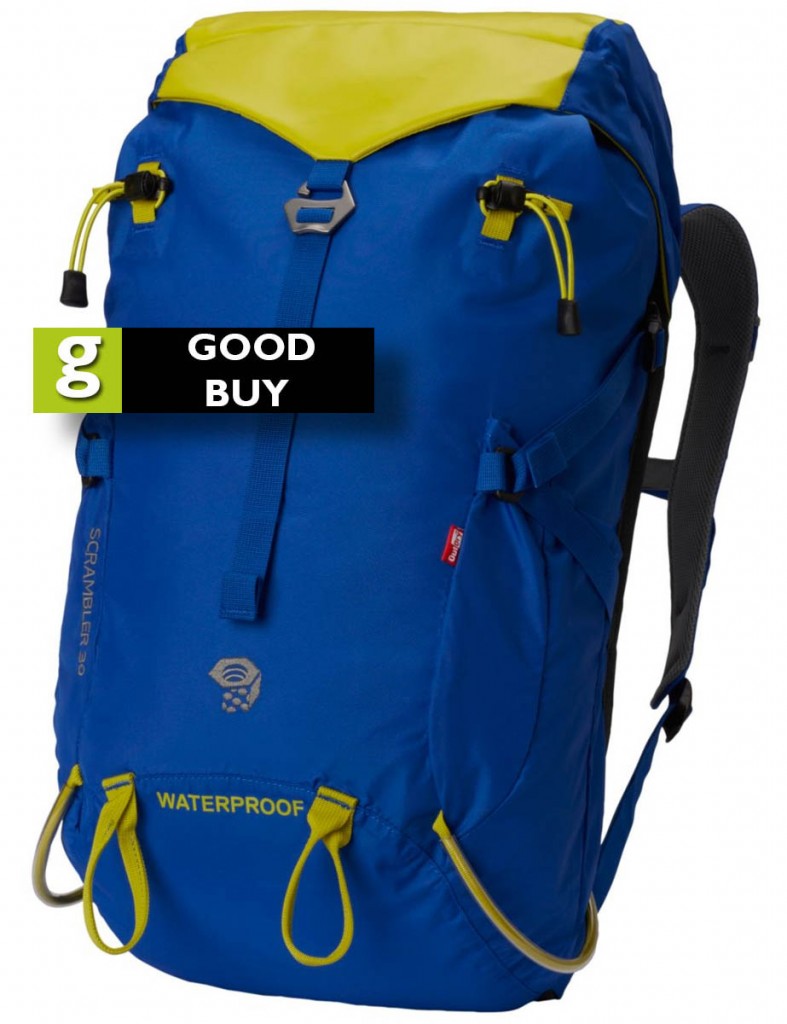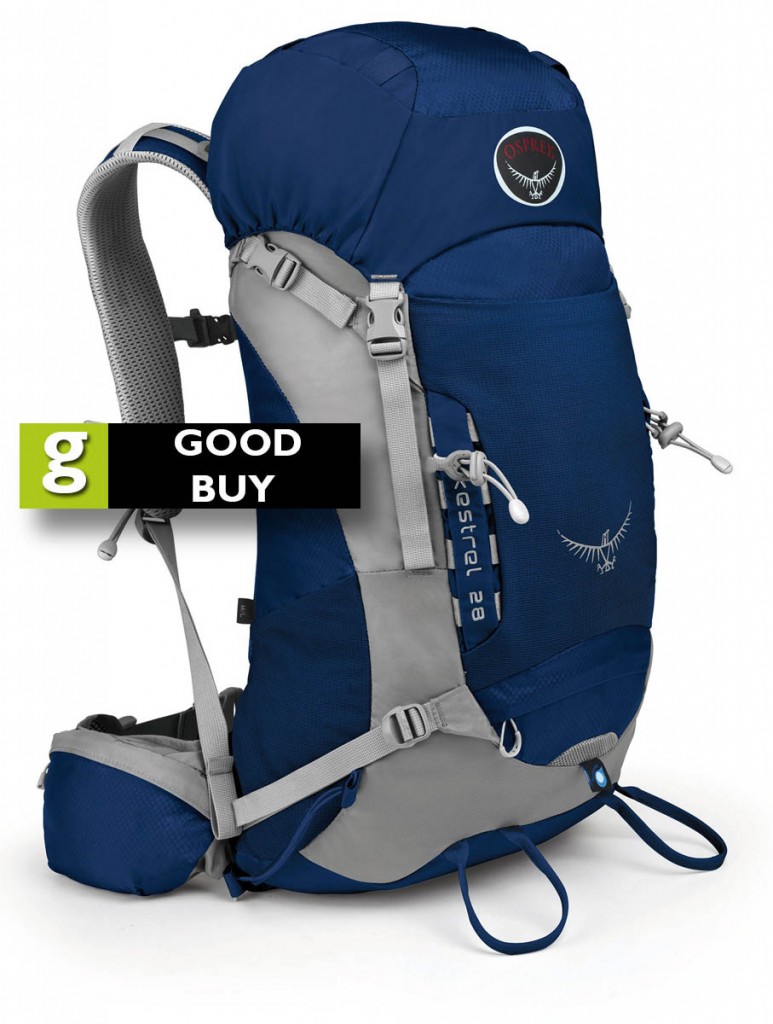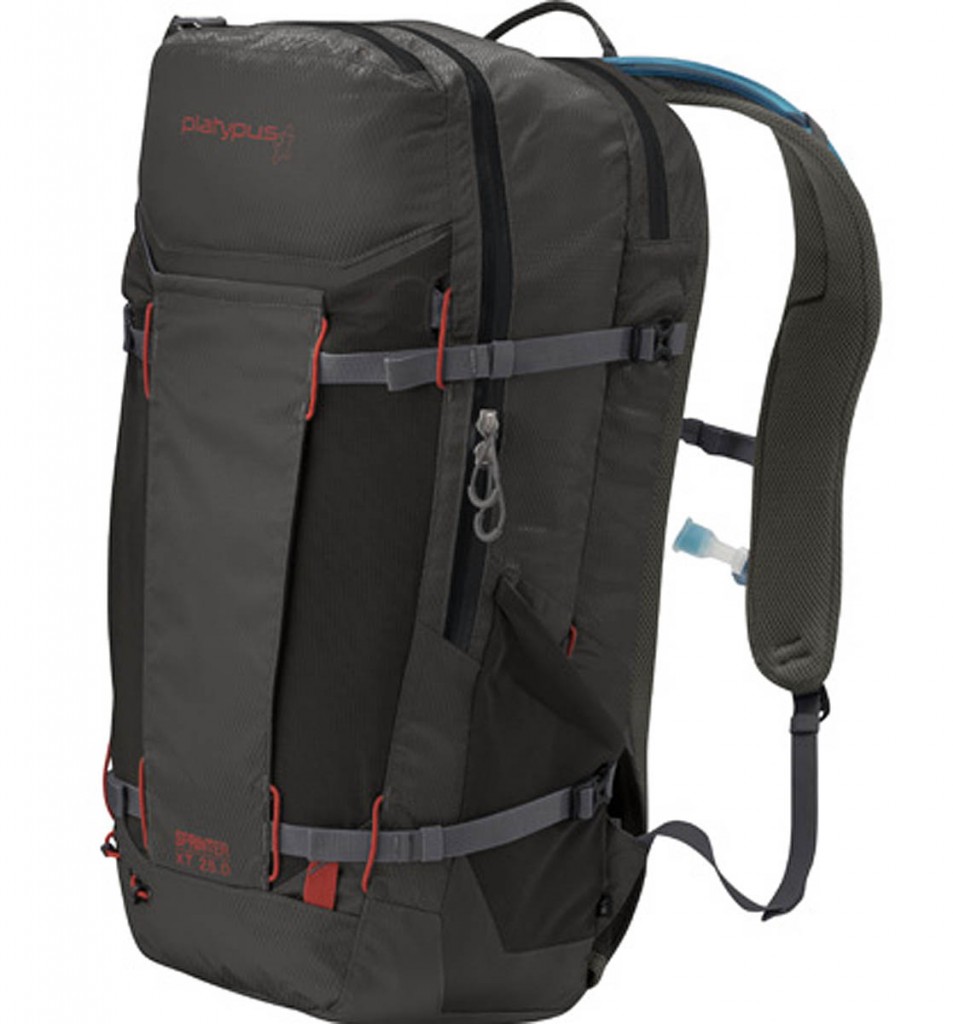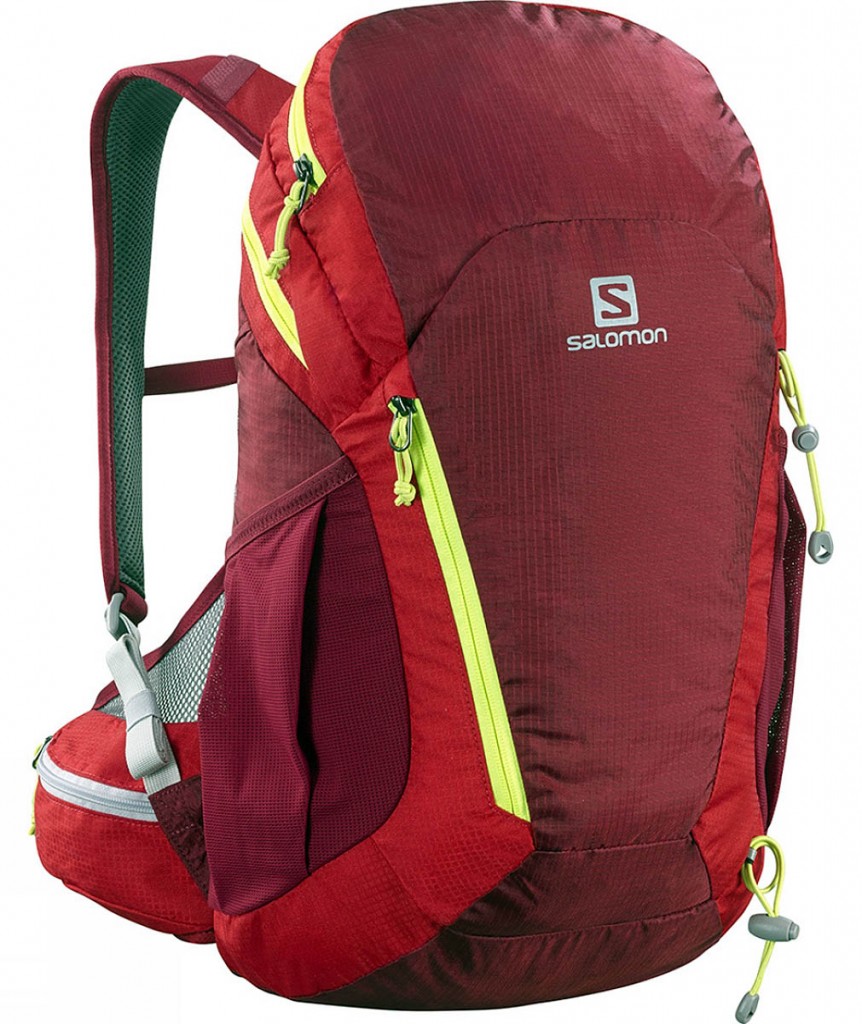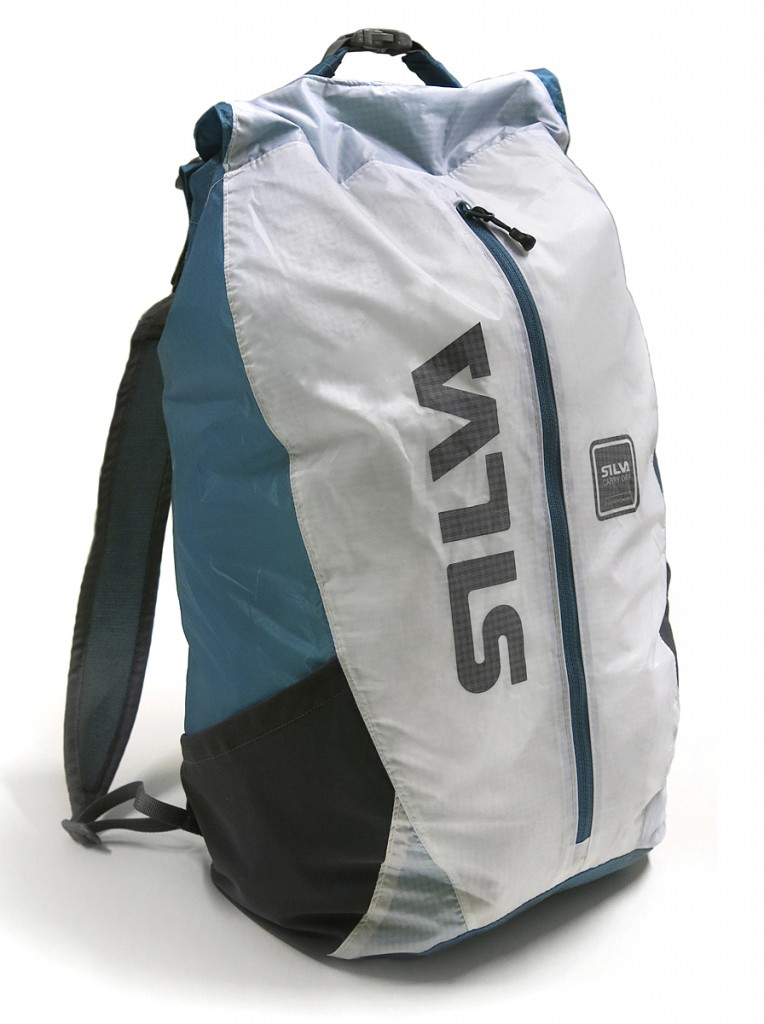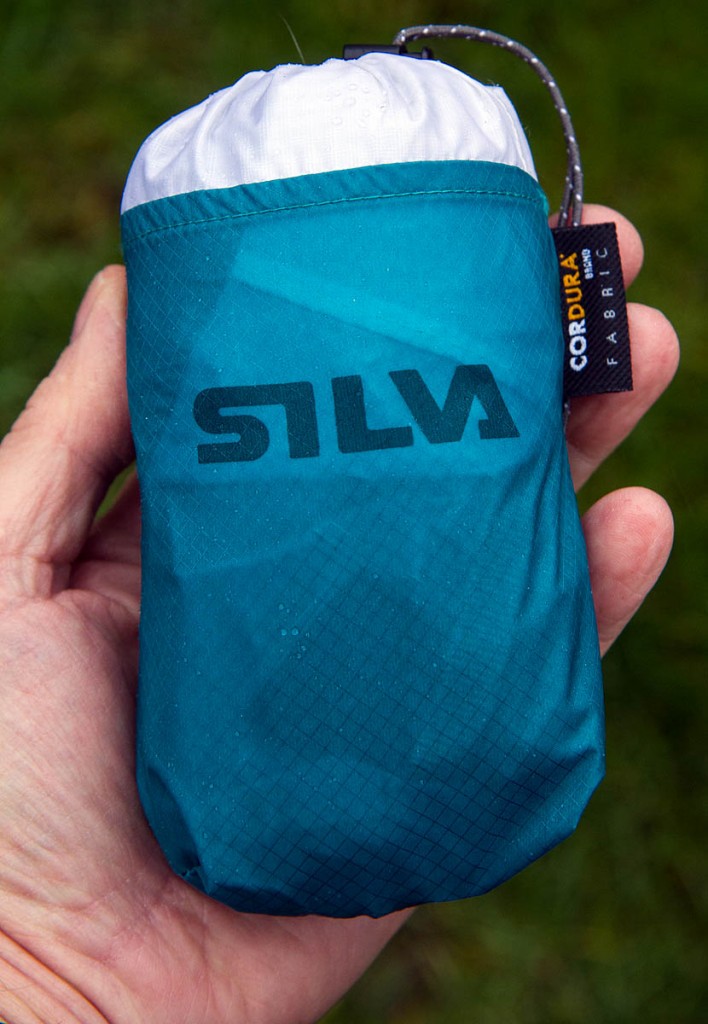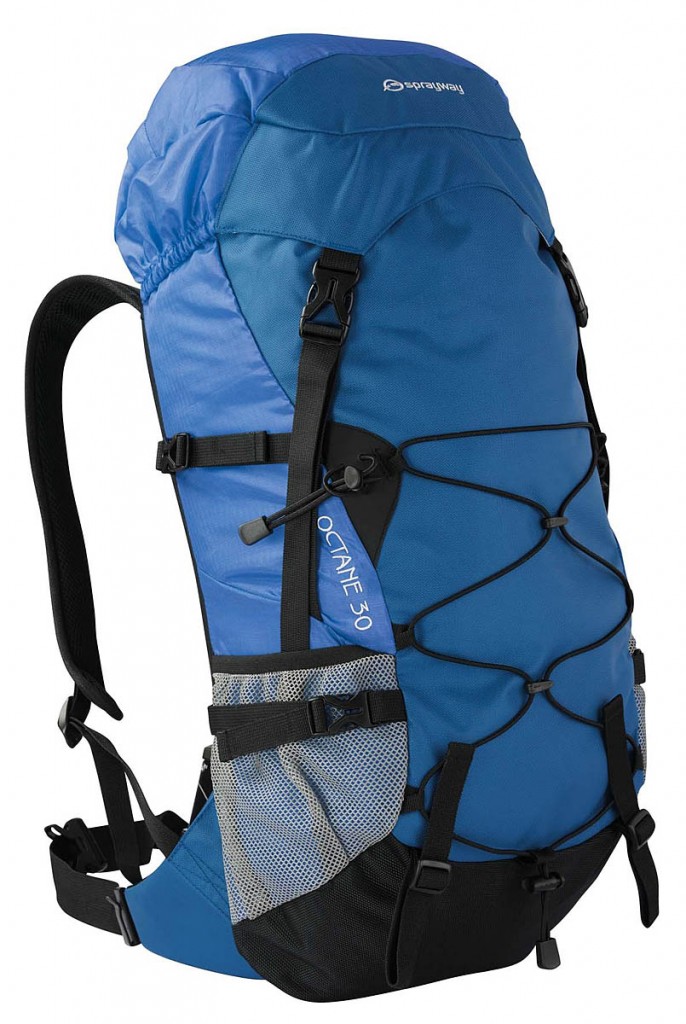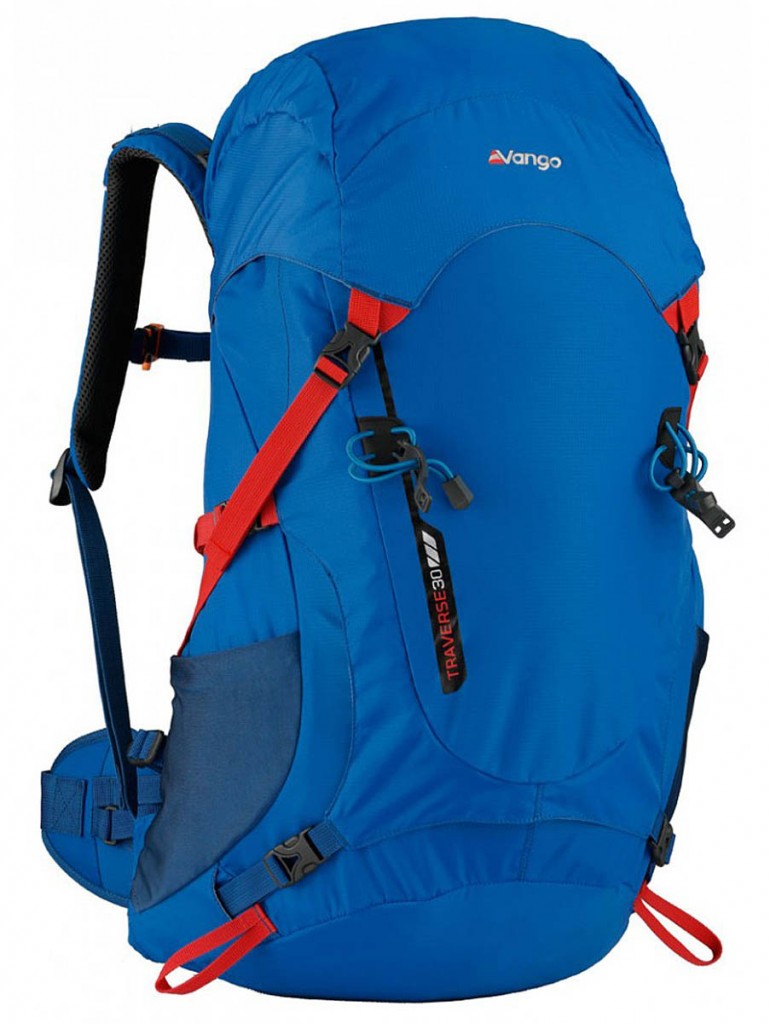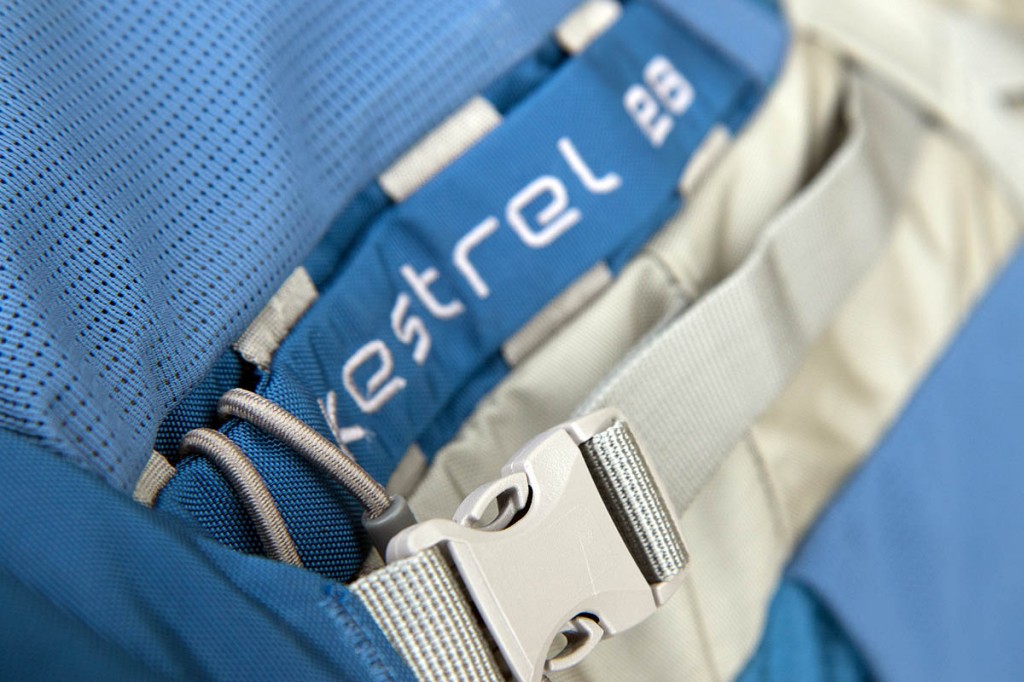If you’re heading for a day walking on the hills or in the UK countryside, you’re going to need a daysack – something big enough to pack everything you need for the trip.
This keeps your hands free for the important things like pointing at those fabulous mountains in the distance, taking a selfie, or snacking on jelly babies to keep the energy levels up.
A rucksack for these trips needs to hold your spare gear and clothing, drinks, food and all those little things that you might find you need to make your day.
In the months when the mountains and moors are not in winter conditions, you can get away with a smaller sack if you’re not packing winter essentials such as crampons, an insulated jacket, thick gloves and the extra layers necessary to survive in snowy and icy situations.
For this review of rucksacks, we looked at packs with a capacity between 15 and 30 litres – enough for most people’s needs for a day in the great outdoors.
There’s a huge variety. We’ve rated them for overall performance, comfort, the quality of their build, the features they have and the value for money they represent. Make sure the pack you choose fits your needs and requirements as well as your budget.
Aquapac Wet & Dry Backpack 25l
Price: £75
Weight: 702g
Colour: black
Rated capacity: 25 litres
Country of manufacture: China
The Aquapac rucksack is a completely waterproof pack, rated at IPX 6, which it the highest rating for a bag that’s not actually submersible.
It is designed as a multipurpose pack, with cyclists and commuters in mind as well as walkers setting out for a day on the hills.
The 210D nylon material feels tough and its taped seams keep out the weather. The main compartment is quite roomy, tapering slightly to the bottom. Within it is a bright yellow pocket, again waterproof, big enough to take a laptop or to separate your wet thing from the rest of the contents. It also has a separate transparent pocket, big enough to keep your keys and other odds and ends in, which has a roll-top closure, again to keep the wet out.
It can also be used to take a hydration reservoir, though there’s nothing to suspend it from, so it might loll about in the pocket, which is quite big.
The whole thing closes with a roll-top arrangement with plastic clips, which seals the pack against water. There are a couple of elasticated stash loops which will hold a helmet and the pack also has a sturdy haul loop.
The back of the pack has a removable insert panel which provides extra stiffness and which can be taken out to provide a sit-mat or to dry it more easily once you’re home.
Either side of the main body of the Wet & Dry are two deep stretch mesh pockets that will accommodate a good sized drinks bottle. They will also take a pair of walking poles, though they’re likely to wobble about a bit and protrude a fair way above the pocket unless they can be collapsed to a very small size.
On the main body of the pack, there’s a lamp loop, which also came with a little carabiner.
The shoulder straps are quite wide and are covered in mesh for ventilation. There are cutouts from a rubberised section too that will accommodate a carabiner or two for attaching things.
The hip belt is narrow and not particularly comfortable, with no padding. It’s completely removable by dint of having plastic buckles at each hip. However, what this means is that it’s quite awkward to reach round to fasten the hip belt in place, rather than having the fastener in a central position as is normal. This for us was the most annoying aspect of using the pack.
The Aquapac Wet & Dry 25l is a tough little pack that offers the very useful peace of mind of knowing your gear is going to stay dry even on the wettest of days. Its thick material means it keeps its shape well even with a fair amount of gear in it.
Performance 27/35
Comfort 27/35
Features 8/10
Quality 9/10
Value for money 6/10
Total score: 77/100
Berghaus Trail Speed 20
Price: £55
Weight: 700g
Colour: grey/black
Rated capacity: 20 litres
Country of manufacture: Vietnam
The Trail Speed 20 has one main compartment plus a smaller one both of which have zip access. The main zip opens wide to allow good access to the pack. We just managed to contain our usual day kit, even though the pack only has a 20 litre capacity.
There’s an elasticated pouch within the main compartment for a hydration reservoir, with a Velcro retaining strap to suspend it. Tube exit is central in the top of the rucksack, but only right-hand shoulder strap has a retaining elastic loop for a tube.
The smaller outside compartment also has a key-ring attachment loop.
There are twin mesh pockets either side of the lower pack which will hold drinks bottles, and the whole pack has a shock-cord compression system on the front.
There are also twin webbing walking pole or ice-axe attachment loops, with bungee retainers at the top of the pack.
But it’s the back of the Trail Speed 20 where the interest lies. It has been developed from technology used in the brand’s Freeflow system and using its MtnHaus division’s body mapping research.
Berghaus has ditched the mesh found on some of its Freeflow models and the Trail Speed 20 simply uses a curved back with four padded sections to keep most of its back out of contact with you. The increase in air circulation to the user’s back results in up to a 3C drop in temperature, the brand said.
The hip belt also uses two large mesh sections on the hip areas, with zipped mesh pockets for odds and ends. Closure of the strap sections of the belt were positive and the plastic buckle was fairly easy to undo when wearing gloves.
Shoulder straps had adequate padding and are quite wide, and were comfortable in use.
On the hill, the two lower back pads in the lumbar region can definitely be felt, but there was no discomfort. The two upper pads are around the shoulder area and are less tangible. Although feeling slightly odd, once you get used to it the pack feels comfortable.
When we took the Trail Speed 20 off, there were signs of perspiration in the areas where the back padding was in contact with the body, but none in the curved space between, indicating the system had done its job. It’s never an easy task for designers to try to prevent that horrible clammy back sensation while making the pack comfortable, but the Trail Speed does a good job. You will, however, still have that clammy feeling where the pads, particularly the lower ones, sit against your back.
It a problem all packs suffer from, though Berghaus has gone a long way to eradicating most of it.
There is an elasticated chest strap which, rather than being on runners for adjustment, relies on unclipping and re-attaching in four different fixed positions to suit your preference. Not as easy to adjust on the hoof as ones with continuous adjustment, so we’d recommend finding the best position before you head out to the hills.
On the whole, a nicely designed pack with a tough feel in the areas that matter, and the customary Berghaus quality.
Performance 28/35
Comfort 27/35
Features 7/10
Quality 8/10
Value for money 6/10
Total score: 76/100
Black Diamond Bolt 24
Price: £90
Weight: 954g
Colour: black
Rated capacity: 24 litres
Country of manufacture: Philippines
The Bolt 24 is a well designed, sturdy pack, in tough feeling 210D ripstop material which has a slight sheen. The bottom is reinforced with thicker material.
The main compartment, which is quite roomy for its capacity rating, has a top opening with a drawstring closure which is then covered by the lid. The main compartment also has a side, zipped opening which gives access for three-quarters of the pack’s length.
On the outside of the front of the rucksack is an expandable, open, large pocket, to take those wet waterproofs to keep them separate. The lid pocket is quite small, but has a key loop.
There are two hip pockets, which will take drinks bottles or similar-sized gear, both of which have a shockcords to cinch the top opening. One nice feature of these is that the cords, like the main compartment drawcord, have nice big plastic loops to tighten and fabric ones to loosen the cords, which are all easy to use while wearing gloves. They also form part of the lower compression system, which also helps stop anything in these pockets falling out.
There is also one zipped small pocket on the right-hand hip belt. With a little ferreting about in the bottom of the pack, we discovered the previously concealed ice-axe/walking pole loops. The top compression straps are positioned to be able to hold axes or poles in place.
The back of the Bolt 24 is formed from ridged, mesh-covered foam, with similar material used in the hip belt. The lumbar region has a solid, padded panel.
The back allowed a little ventilation, though there was some build-up of perspiration.
The shoulder straps are also made from this material, and are well ventilated.
There’s an external compartment for a hydration reservoir, sandwiched between the main compartment and the pack’s back, which is quite a tight squeeze for a standard reservoir filled with water.
The straps and hip belt have Black Diamond’s reactive system, which allows the webbing sections to slide through the bottom section of the harness system, keeping the pack more vertical when scrambling about.
This system shows the brand’s climbing heritage, and there are daisy chains for gear on the main body, along with a couple of loops on the shoulder straps. But, as Black Diamond says, this pack is suitable as an all-rounder, with recommended users including climbers, walkers, via ferrata users, trail runners and general travel, though at nearly a kilo, runners might fancy something more lightweight.
In use, the Bolt 24 was comfortable, supporting a good load on its well designed shoulder straps, which also have an adjustable sternum strap, and the hip belt. The reACTIV system allows for plenty of movement of arms when reaching up for holds, without upsetting the balance of the load.
It’s a well thought-out pack, with lots of nice little design features, and feels up to the usual quality you would expect from Black Diamond.
Performance 29/35
Comfort 26/35
Features 7/10
Quality 9/10
Value for money 6/10
Total score: 77/100
Boreas Larkin
Price: £79.95
Weight: 548g
Colour: black
Rated capacity: 18 litres
Country of manufacture: China
The Boreas Larkin is one of the lighter packs in the test, yet it feels rugged, with its tough ripstop nylon material.
It’s compact, with a single main compartment that tapers slightly to the base. There’s an inner pouch for a hydration reservoir, with a suspension clip. Tube exit is via either left or right apertures, which neatly lead straight down on to shoulder straps.
There are two zipped, slightly stretchy exterior pockets above the hip, and the pack also has two hidden pockets on its front, both of which conceal a pair of gear loops which are neatly tucked away when not needed.
The Larkin also has a stretch outer pocket on its front, again with two hidden daisy-chain straps. The lid also has two concealed daisy chains, plus a small, zipped compartment.
The pack’s back is a fairly simple ridged, perforated foam unit with a net covering. It doesn’t give the rucksack much rigidity, and was only moderately successful at ventilating the user’s back.
The shoulder straps also have ventilation perforations. The pack’s straps, including the hip belt, are quite narrow, to keep weight down, so there are no pockets on the hip belt.
The Larkin doesn’t have a rain cover, but the material has a waterproof treatment.
In use, the pack performed well. It’s on the smaller side, but will take the kit for a summer walk or mountain biking trip. The back is not stiffened at all, but the shoulder straps are just padded enough and the pack was quite comfortable, though expect a damp back if you’re pushing the pace.
The Boreas pack isn’t cheap for its price, though it’s a tough little rucksack that should give long service.
Performance 27/35
Comfort 25/35
Features 6/10
Quality 8/10
Value for money 6/10
Total score: 72/100
Coleman Glacier Basin 30L
Price: £39.95
Weight: 648g
Colour: grey/yellow
Rated capacity: 30 litres
Country of manufacture: Vietnam
The Coleman pack is another lightweight offering, and is also among the most competitively priced.
The back is a quite flexible mesh-covered foam unit, which didn’t prevent a build-up of perspiration very well. The body of the pack is 70D ripstop polyester, with side and bottom panels in a tougher-feeling fabric.
It has a main compartment with a good amount of space, plus a sleeve for a hydration reservoir, with hanging loop. Tube exit is central.
On the front there’s a zipped pocket, again with a good capacity, which has a key loop. At hip level, there are two stretch mesh pockets and the hip belt also has two small zipped, mesh pockets.
A drawstring closes the main compartment, and the lid has another, fairly small, zipped pocket.
Compression of the pack is by shockcords, held by spring toggles. There are also daisy chain loops built into the strap which secures the lid. The shoulder straps are not ventilated, but they were padded enough to be comfortable with a reasonable weight, as was the hip belt.
The sternum strap is also adjustable for height. The pack doesn’t have a raincover.
For a pack at the budget end of the range, the Glacier Basin has all the features you are likely to need on a day’s walk – though the addition of walking-pole and ice-axe loops would be useful – and swallowed a good amount of gear. It wasn’t the best at keeping us ventilated, particularly on the back, but it was reasonably comfortable and represents good value for money.
Performance 27/35
Comfort 25/35
Features 7/10
Quality 7/10
Value for money 8/10
Total score: 74/100
Craghoppers Kiwi Pro 22
Price: £35
Weight: 516g
Colour: green
Rated capacity: 22 litres
Country of manufacture: China
The Kiwi Pro 22 is a compact pack, with lots of foam padding in its 3D aerator back that has three large soft pads and ventilation channels.
The main compartment is quite small, as you would expect from a 22litre rucksack, but the zip opening goes half-way down the body, so access to gear is easy. Inside, there’s a hydration bladder sleeve with suspension loop and a single tube exit on the right shoulder.
We did struggle to fit our normal day kit in, but with some judicious positioning we managed – just.
Inside the main compartment there are also five small pockets of varying sizes, one of which is zipped, for keeping bits and bobs in.
On the outside of the front of the pack are two further zipped pockets, one small, one larger. There is also an ice-axe/walking pole loop with retaining bungee strap at the top.
The Kiwi Pro 22 also has two hip-level mesh stretch pockets. A nice touch is that, in one of them is hidden a reflective strap that can be clipped by press-stud into the opposite pocket to provide a good width safety feature.
The shoulder straps are wide and moderately well padded, though there’s no real ventilation. The hip belt is a fairly narrow webbing affair, so there are no pockets, but there are enough elsewhere on this pack. There are also two plastic D-rings on the shoulder straps from which to hang whatever you please. There’s also a loop for a rear red light.
In use, the shoulder straps, though not having a massive amount of padding, were quite comfortable, though the hip belt was a little too narrow to bear the bulk of the pack’s weight.
The airflow back allowed a little air circulation, but there was a fair build-up of perspiration.
The tough-feeling polyester material of the Pro 22 resisted the knocks and scuffs well. The pack doesn’t have a rain cover.
This little rucksack would be suitable for someone wanting to combine their everyday commuting pack with one for day walks. With a little judicious packing, the Craghoppers Pro 22 will function well at a budget price.
Performance 25/35
Comfort 23/35
Features 7/10
Quality 6/10
Value for money 8/10
Total score: 69/100
Fjӓllrӓven Funäs 25
Price: £90
Weight: 1,294g
Colour: red
Rated capacity: 25 litres
Country of manufacture: Vietnam
The Funäs is a nice, simple, good looking pack from the Swedish brand.
It feels bigger than its rated 25 litres, and the main, top-loading compartment held a good amount of gear. It closes with a drawstring and there’s a further compression strap that could double as a rope strap, before a lid covers the whole thing.
The rucksack is made from a robust 100D nylon, with the pack’s base in 500D material.
Within the main compartment is a pouch for a hydration reservoir, though this is quite small, and just accommodated our 2 litre bladder. Anything bigger would be a struggle. There is one tube exit on the right shoulder.
There’s also a reasonably sized zipped pouch within the main compartment for odds and ends.
On the outside of the pack are two stretch pockets, big enough to take a drinks bottle, which both have openings at the side as well as the top, which is handy for slipping in items without contorting yourself too much, though we found smaller things could too easily slip out of the side opening.
The lid has a fair-sized zipped pocket with a nice big plastic loop on its puller that was easy to use while wearing gloves. The lid has another, zipped compartment on its underside for documents, though neither has a key loop.
One omission from the Funäs 25 is an ice-axe loop. Walking poles can be stuffed in the mesh pockets and held with the pack’s top compression straps, and there is also a bungee arrangement on the front of the rucksack that could be used for securing axes or alternatively items such as wet clothing.
There is also a bungee on the lid that can be used to secure a helmet.
The back of the pack is a ridged foam unit covered in mesh, with a cut-out at the top of the centre. It was comfortable but only moderately good at preventing sweaty back syndrome.
The shoulder straps and hip belt have the same backing. The shoulder harness is wide and comfortable and the hip belt was the broadest of any in this test, with a large cut-out section at its centre.
This made for very good load bearing, even with a fair amount of weight in this relatively small capacity pack.
There’s a sternum strap adjustable for height and the shoulder straps have reflective detail.
The pack also has an untethered raincover housed in a Velcro-closing pocket at the bottom of the rucksack.
We liked the clean Scandinavian lines of the Fjӓllrӓven rucksack, which bore the weight well and was comfortable over a period of extended wear.
The Funäs 25 is a no-nonsense piece of kit, well made, that should give good service on day excursions into the mountains.
Performance 30/35
Comfort 26/35
Features 7/10
Quality 9/10
Value for money 6/10
Total score: 78/100
Gregory Z30
Price: £90
Weight: 1,264g
Colour: red
Rated capacity: 30 litres
Country of manufacture: China
The first thing noticeable about this Gregory pack is its CrossFlo suspension back, which has a curved frame and ‘trampoline’ mesh suspension panel. What this means is that the load sits away from the back to enable ventilation and alleviate the notorious sweaty back feeling.
The drawback of all these systems is that the curved nature of the pack eats into main compartment space, though it did accommodate all the gear we would normally pack for a day in the mountains outside of the winter period.
It does mean the weight sits further back, however, but this didn’t lead to any great instability. When you put the Z30 on, the weight is firmly directed to the lumbar area. In use, the pack was comfortable, with well designed and ventilated shoulder straps and a good broad hip belt that also has ventilated foam.
And the CrossFlo back design did actually work well and, apart from the lumbar area where the rucksack is mostly in contact with the back, it avoided build-up of perspiration even when pushing the pace hard up hill.
This is the latest incarnation of the Z30 and Gregory have shaved off a little weight from the pack, though its 1kg-plus mass is an indication that the brand has stuck to using tough materials, with a combination of ripstop 210D, 200D and 100D fabrics combined in a good quality rucksack.
The Z30 doesn’t have a lid, but uses a big zip opening at the top, which gives a wide opening to about half the pack’s height. The Gregory rucksack is wider and deeper at the top than the bottom, which matches the back’s shape.
The main compartment has an inner zipped pocket with key loop.
There’s a zipped outer compartment which equates to a lid pocket on a conventional design, comfortably deep enough to take a laminated OS map. The pack also has an exterior ‘bucket pocket’ for stashing wet clothing or other gear. It’s just a little too small for most helmets though.
The Z30 also has two stretch mesh pockets at hip level, for items such as drinks bottles.
The hip belt, which is broad and good at bearing the load, has dual zipped pockets which, along with all the other zip pullers, have good big fabric loops which makes using them a doddle when wearing gloves.
The pack has compression straps near the top of the sides of the main body and, oddly, right at the bottom of the pack.
There are concealed bungee loops for walking poles and the Z30 has a tethered raincover which is stashed in a compartment mid-way up the main body in the top of the bucket pocket.
It’s clear a lot of thought has gone into the design of the Gregory pack, with its unconventional shape and back system. It’s well made and comfortable in use.
Performance 30/35
Comfort 28/35
Features 7/10
Quality 9/10
Value for money 6/10
Total score: 80/100
Lowe Alpine Eclipse 25
Price: £75
Weight: 778g
Colour: blue
Rated capacity: 25 litres
Country of manufacture: Vietnam
The Eclipse 25 has a roomy main compartment. Access is via a zip rather than a lid opening, but the great feature of this Lowe Alpine pack is that the zip opens right to the bottom of the main compartment on the left side, making it both easy to pack but also very simple to get items that are at the bottom of the rucksack without taking out everything on top.
Material is tough-feeling TriShield Micro Rip, and the back, shoulder straps and hip belt are in mesh-covered foam. The back unit has ventilation channels, while the straps have ventilation holes cut into the foam.
Inside the main pack compartment, which easily swallowed our day gear, there is a pouch for a hydration reservoir, with hanging loop. The tube exit is placed centrally.
There’s also a zipped pocket within the main area for odds and ends.
There’s a zipped exterior pocket at the top of the main body, which also has a key clip within it, and the Eclipse 25 also has larger open stretch pocket which secures with a plastic hook clip. There are two stretch pockets either side which will hold drinks bottles.
The pack has ice-axe loops and plastic bungee fasteners, as well as Lowe Alpine’s Tip Gripper plastic loops which hold walking pool tips very securely. There are four lash loops on the front of the main body for attaching extra gear and the pack has four compression straps.
Shoulder straps are narrow at the shoulder itself, then widen to provide good support.
There’s a small, zipped, stretch pocket on the left shoulder strap, described as phone compatible, but in reality too small for modern smartphones. It will accommodate a standard compass, though.
The hip-belt is quite broad in the hip area, and each has a zipped pocket for small items.
There is a tethered raincover accessible in a zipped pocket at the bottom of the pack.
The sternum strap adjusts height by sliding the plastic clips out of one position on a daisy chain arrangement and repositioning in another. This is fiddly and makes adjustment a bit of a chore.
As you would expect from a company with Lowe Alpine’s pedigree, the Eclipse 25 is well designed and has all the features you’re likely to need on your trips to the hills.
Performance 28/35
Comfort 25/35
Features 8/10
Quality 7/10
Value for money 7/10
Total score: 75/100
Millet Prolighter 30
Price: £110
Weight: 998g
Colour: blue
Rated capacity: 30 litres
Country of manufacture: China
The Prolighter 30 is designed with mountaineers in mind, but works well for hillwalkers too.
Its clean lines and simple design mean there are no extraneous pockets to catch on things when things get scrambly.
The pack is made from a combination of 210D honeycomb-pattern ripstop nylon, 420D Velocity and 1,000D Corudura and it feels bomb-proof with the reinforced panels at the base and other high-wear areas up the centre of the body.
Despite feeling one of the strongest packs in the test, it still managed to sneak in just under a kilo.
The main compartment has lots of room, easily enough to swallow a typical day’s gear for a trip on the hills. The Millet rucksack has a narrow, longer body and was comfortable in use. The X-Lighter back has two curvy, padded, ridged sections that lead up to the shoulder straps, which are wide and lightly padded.
The hip belt is also quite broad and has some ventilation. The back has a centre channel that helps a little with ventilation though there was some perspiration build-up.
Inside the main compartment you can see the enclosed sleeves for the two x-formation struts that give the pack rigidity while still allowing movement of the arms and shoulders while tackling scrambling or climbing routes. There is also a hydration reservoir pouch, with twin Velcro loops to keep it in place, and a single tube exit to the right shoulder, which is protected by a Velcro closure which enables a nice tight seal to be made around the tube.
The top opening has an inner collar with drawcord, with a second compression strap and buckle that also doubles as a rope strap. The lid then closes over the opening and fastens with two buckles. An oddity is that the straps for the lid begin quite high on the body of the pack, so if its load doesn’t fill the main compartment to the top, the lid doesn’t sit snugly over the pack as there isn’t much travel until it hits the end of the strap.
The lesson being: pack the contents narrow and high, and use the Prolighter 30’s four compression straps to keep the pack streamlined. It’s not a big issue, just an oddity when so many packs have lid fastening straps that go virtually the full length of the rucksack. However, that’s a bit of extra strapping to catch on rocks or other hazards, and it’s clear the Millet pack is built to be as climber-friendly as possible.
The lid has an outer zipped pocket and an inner zipped one with a key clip. The lid also has four stash loops.
For ski-mountaineers, there are reinforced loops for carrying skis on each side of the pack, with the compression straps holding them in place. The pack also has Millet’s FPP system for carrying ice-axes. Two axes’ picks will slot under the reinforced sleeve, with the shaft of the axe secured by two buckled straps and at the top of the rucksack by adjustable shock-cords. To access the axe, you simply have to swing them out of the sleeve and loosen the shock-cord, rather than slotting them all the way through a conventional ice-axe loop.
There are two additional strong stash loops near the top of the rucksack’s body.
The hip belt does not have any pockets, but has gear loops for climbing racks.
The pack doesn’t have a rain cover.
The Millet Prolighter 30 is an impressively robust pack, simple in design and well made. It doesn’t have pockets sprouting everywhere on its surfaces, but the big main compartment will accommodate all the gear necessary for a day on the hill and, for someone travelling light, even enough for a winter excursion.
Although built around a streamlined mountaineering design, it worked well for us as hillwalkers too. The pack was comfortable in use, though the ridged and shaped back only provided moderate ventilation.
You’ll pay a good amount for this Millet pack, but it feels like it should give many years’ service.
Performance 30/35
Comfort 27/35
Features 7/10
Quality 9/10
Value for money 6/10
Total score: 79/100
Mountain Hardwear Scrambler 30 Outdry
Price: £85
Weight: 758g
Colour: blue
Rated capacity: 30 litres
Country of manufacture: China
This Mountain Hardwear pack is completely waterproof, made from the brand’s own OutDry fabric and tested in a rain room for 24 hours.
It’s another clean design – the name is an indication that this pack is made with climbers and scramblers in mind. There is one main compartment and a lid with a reasonably sized zipped pocket.
The only other pockets are a pair of open ones each side of the outside of the pack, big enough to take drinks bottles.
The material is tough and quite rigid and gives confidence that this pack is indeed waterproof. However, it’s not submersible, as the top has a conventional opening with drawcord, so don’t think you can go taking it through a sump during that caving trip.
Although rated at 30 litres, its main compartment felt a little smaller than similarly described packs, though we did squeeze in a day’s gear including the DSLR camera we always carry on our trips into the hills.
The drawcord makes a nice tight closure which the lid then covers to complete the system for keeping out the rain. There is also a rope strap with buckle under the lid, and a separate hydration reservoir pouch that sits outside the main compartment at the back of the rucksack, with tube exit possible either side from under the lid. There is also a drain hole at the bottom, so any water that might escape can exit. There is also a Velcro suspension loop.
We’ve heard it said that this compartment could be used for a laptop, but because water could enter through this bottom drain hole if the pack was put down on wet ground, we wouldn’t recommend this. The main compartment, though, is completely water sealed.
The lid is covered in an extra layer of plasticised ‘tarp’ which improves its weatherproofing, and its tapes are sealed, but the rear zip, though covered by a storm flap, is not water resistant, so a little water could creep in in extreme conditions. It didn’t on our tests, during some of which we experienced prolonged rainfall.
The lid is secured to its single compression strap by a flat metal hook, rather than the more common plastic buckle. This is fine in that it’s more durable, but it turned out to be the most annoying feature of an otherwise well designed pack. The tough webbing loop on the lid just has enough space to be slid out of the hook. But when the strap is under strain, such as is usual when you’ve tightened it to give a good seal over the top opening, the loop has a tendency to double over, making it impossible to slide through the hook opening, and therefore making the pack’s main compartment inaccessible until you’ve solved this. In a howling gale, torrential rain and with gloved hands, the only way we could do this was to take off our gloves and use a key to unfold the loop to its usual position and free it.
A simple solution would be to widen the gap in the hook to prevent this happening.
Other than this, the Scrambler 30 worked well. Its back has a ridged plastic central section, covered in mesh. A central channel allows some ventilation, and padded foam sections then provide a reasonably comfortable carry against the back, despite the foam being fairly thin. The pack moulds itself to the back shape, which provides good stability when needed. Ventilation at the back, however, was moderate and there was some build-up of perspiration.
The shoulder straps have similar foam padding which is not very thick, but they are quite broad and were fine at bearing the load of the pack.
The hip belt is simply webbing material with a plastic buckle and no keeper loops, so excess has to be tucked in behind the belt if you don’t want it flapping around. This does mean the pack can be worn more easily with a climbing harness.
The shoulder straps each have a single loop for threading your drinks tube through or perhaps slotting a carabiner in. Both have reflective detail.
The sternum strap adjusts easily for height.
There are plastic-covered gear loops each side at hip level for carrying your rack. Compression of the pack is simple, with a single strap each side zig-zagging from the lower mid-section to the top of the rucksack.
The Mountain Hardwear rucksack has two ice-axe loops and bungee fasteners, each of which also has small stash loops.
We had the Scrambler 30 out in some really filthy weather, with high winds and driven heavy rain and it kept our gear completely dry, which is very reassuring.
Although aimed primarily at those contemplating a bit of scrambling or climbing, the Mountain Hardwear worked well for a day walk too, especially if you’re happy with principally a single main compartment rather than lots of different small pockets.
And, in the UK climate, its waterproof construction is a real boon. Quality was good too.
Performance 31/35
Comfort 25/35
Features 7/10
Quality 9/10
Value for money 7/10
Total score: 79/100
Osprey Kestrel 28
Price: £90
Weight: 1,318g
Colour: blue
Rated capacity: 30 litres
Country of manufacture: Vietnam
The Osprey Kestrel 28 is a grown-up pack that will satisfy the needs of most hillgoers.
Its rated 28 litres felt big and it swallowed a large amount of gear. The Kestrel 28 is a fully featured pack, with most of the items you would expect on a bigger rucksack. The pack is quite long but is adjustable for the user’s back length, using a Velcro panel. We found this useful to get a good fit on the shoulder harness while keeping a nice tight hip belt to support most of the weight of the rucksack and contents.
The back is Osprey’s Airscape, which consists of a series of foam ridges covered in a mesh outer. It did allow some venting but while working hard uphill there was a fair amount of perspiration build-up.
There is space for a hydration reservoir on the outside of the pack, between the Airscape back and the main body of the pack and the tube can be fed through retaining webbing loops on either shoulder strap.
The shoulder harness itself was quite comfortable, with a degree of padding and also ventilation holes in the inner surface material though, again, when working hard, there was a little dampness under the straps. The sternum strap is adjustable via ‘rails’ on either side.
The hip belt is very comfortable and supports the load very well. It’s broad and well padded in the hip area, with wide webbing sections in the middle, with a large plastic buckle. There are small zipped pockets on each side of the hip section, with plastic loops on the zip pullers which were easy to use while wearing gloves.
The main compartment of the Kestrel is top opening, with lots of space which easily contained all our usual day walk gear. There’s a drawstring closure which is then covered by the lid, which has a zipped smallish outer pocket with a key clip, and a zipped mesh document pocket on the underside.
The lid is secured by twin straps with buckles.
The pack has two stretch mesh pockets on its sides, which will take drinks bottles. There’s also a large, unzipped stretch outer pocket on the front of the rucksack, useful for stowing, for instance, a wet jacket.
There are ice-axe loops and good bungee fasteners, both of which are adjustable for height. A rain cover is concealed in a zipped pocket near the bottom of the pack which again has a plastic loop on its puller to facilitate use when wearing gloves.
The Kestrel has Osprey’s Stow-on-the-Go system to enable walking poles to be stashed away for short periods, rather than having to take the pack off. There’s a plastic-covered bungee loop on the left hip area, which you pass your poles through, and the left shoulder strap has another adjustable bungee loops which tightens to keep them in place.
A tethered raincover is in a zipped compartment towards the bottom of the pack.
Four compression straps are available for reducing the volume of the pack if needed, and the rucksack is made from tough fabric with reinforcement on the bottom.
It performed well and has all the features you need for day trips to the hills and is even just big enough for lightweight winter days. The only minor bugbear was that the loop holding the clip suspending our hydration reservoir became unstitched during testing; a surprising and rare failure from a brand we’ve found to offer consistent good quality. It didn’t affect performance greatly, but just meant the reservoir might slip a little lower in the pouch than normal.
Performance 30/35
Comfort 27/35
Features 8/10
Quality 7/10
Value for money 7/10
Total score: 79/100
Platypus Sprinter XT25
Price: £120
Weight: 1,088g (914g without reservoir)
Colour: grey
Rated capacity: 25 litres
Country of manufacture: China
This little Platypus pack comes with a hydration system included. There’s a 3-litre Platypus Big Zip LP reservoir and tube in the separate external zipped compartment. The reservoir has a wide neck opening with plastic zip and the plastic hanger slides on to ensure a good tight seal. The closure handle then hangs on two hooks within the pack’s pocket. There are two tube exits and the bite valve has a lock which works by rotating the end. The tube has a magnetic clip to attach it to the sternum strap.
Though the rucksack is made in China, the hydration reservoir is a product of the USA. Bought separately, the hydration system would cost £34, so this needs to be borne in mind when looking at the price of the pack.
The Sprinter XT25 has 22 litres of space apart from the pocket accommodating the hydration reservoir.
We did manage to fit all our day’s gear into the main compartment, which has a water-resistant zip that keeps the rain out. Seams are taped too, making the main compartment weatherproof – a useful attribute in the UK climate.
The zips opens to about half the length of the pack, giving good access. Within it there’s an extra mesh, zipped pocket with a key clip. On the front of the pack is another small, weatherproof pocket with a water-resistant zip. The Sprinter XT25 also has an open fabric and mesh pocket on the front, useful for stashing a wet jacket for instance.
The pack has two stretch mesh pockets that will take drinks bottles and the hip belt, which is wide, soft and padded, has twin zipped mesh pockets. All zip pullers have nice big plastic loops which make them easy to operate while using gloves.
The shoulder straps are similarly nice and broad and padded and the sternum strap is adjustable for height.
The back has padded sections with a ventilation channel up the middle section, though there was a build-up of perspiration in common with many of the packs in the test.
As we’ve found with previous Platypus packs, a great deal of thought has gone into the design to keep things neat. The webbing ice-axe loop and bungee loop near the top of the rucksack can be stashed away when not in use. Similarly, using a hidden spring toggle in the outside pocket, two walking pole loops can be expanded or retracted, with the top bungee again stashable.
The pack has four compression straps to adjust volume of the rucksack if travelling light. The frame sheet that gives the rucksack its rigidity on the back can also be removed if you’re very weight conscious.
All the straps – shoulder, hip and compression – have loops or plastic keepers to tuck in spare sections and stop them flapping about in the wind.
The cord loops on the front of the pack can also be used to secure a helmet.
In use, the Sprinter XT 25 coped well with our day load, and was comfortable thanks to the nicely padded shoulder straps and hip belt.
The hydration system integrates well with the pack, and the fact it will keep out the rain is very useful. It’s pricy, but well made, well designed and you do get a 3-litre hydration system included.
Performance 28/35
Comfort 27/35
Features 8/10
Quality 9/10
Value for money 6/10
Total score: 78/100
Salomon Sky 21
Price: £70
Weight: 690g
Colour: red
Rated capacity: 21 litres
Country of manufacture: Philippines
The Salomon pack is a lightweight, neat pack rated at 21 litres, though it feels a little bigger than that and we were able to squeeze in our full day kit.
Despite its relatively light weight, the Sky 21 feels tough, with ripstop nylon in most of the body of the rucksack. Opening into the main compartment is via a zip top, which goes three-quarters of the way round the pack. Inside the single main compartment is a pouch for a hydration reservoir, with a Velcro suspension loop. Tube exit is to the left shoulder area.
The lid area also has a reasonably sized zipped outer compartment with a key clip.
On the front of the rucksack is a medium-sized zipped compartment and there are twin, zipped mesh pockets on the hipbelt. The Sky 21 also has two mesh stretch pockets for drinks bottles.
The back has the Airvent system, a pattern of foam bobbles with a mesh cover which provided a reasonable amount of ventilation, though there was some perspiration build-up at the back.
Shoulder straps were nicely padded and comfortable, and the hip belt, which is broad and padded round the hips, was comfortable too, with a broad webbing centre section. Elastic loops keep excess strapping from flapping. There was some ventilation in the straps and belts, but when working hard there was a little moisture noticeable.
Zip pullers have cord extensions which could be used with gloves on and the pack also has bungee holders for walking poles or ice axes. The Sky 21 doesn’t have a rain cover.
The Salomon pack was a nice looking, tough feeling little rucksack that was comfortable in use and is just about big enough for the average day on the hill.
Performance 27/35
Comfort 26/35
Features 6/10
Quality 7/10
Value for money 7/10
Total score: 73/100
Silva Carry Dry Backpack
Price: £34.99
Weight: 148g
Colour: white
Rated capacity: 23 litres
Country of manufacture: not stated
This little Silva pack is unlike any other in the test. It weighs just 148g and is made from 30 denier Corudura.
It has no stiffening in its body or back, so we wouldn’t recommend using it to carry any great weight.
It packs so small that it fits into a little stuff sack that fits into the palm of the hand. Silva says it’s ideal to use, for instance, when you want to leave your heavy pack at the basecamp and head off.
The Carry Dry Backpack has one main compartment and an outer, zipped pocket on its front. Its main compartment is waterproof, with taped seams and a roll-top fastening.
It’s possible to get quite a bit of gear in the main body though we’d advise this is kept light. The shoulder straps have no padding, so overloading the pack with weight puts all of this on to the shoulders – there’s no hip belt – and is not very comfortable. The material of the pack is thin so any hard edges in the contents need to be kept away from the back of the pack or they will dig into the user.
The Carry Dry Backpack is simple in design and use. There is just the main compartment plus the single zipped one on the front. There are a couple of mesh stretch pockets on the side, but they’re not very deep so are more suitable for gloves or energy bars rather than drinks bottles.
The top is rolled over two or three time and the clasp closed to make it watertight, then you’re ready to go.
The shoulder straps can be tightened in to pull the pack into the body a little – useful if you’re on the move quickly.
The pack also has reflective detail on its front.
There’s no beating the Silva Carry Dry Backpack for weight – it’s the lightest in the test by a long way.
We don’t think it would serve as a main daysack unless you always travel light. It will hold waterproofs, an extra layer and food, no problem, but load it with anything heavy and it starts to get uncomfortable.
That said, it feels robust for all its lightweight, and would make a good addition for those little jaunts away from the basecamp, or a fast and light trip to the hills.
Performance 25/35
Comfort 24/35
Features 6/10
Quality 7/10
Value for money 8/10
Total score: 70/100
Sprayway Octane 30
Price: £50
Weight: 1,053g
Colour: blue
Rated capacity: 30 litres
Country of manufacture: China
Sprayway’s Octane 30 is a roomy conventional pack, with a big main compartment that easily swallowed our test load with space to spare.
Rigidity is provided by two staves within sleeves in the main body which, if you want to minimise weight, could be removed. The back is well padded at shoulder and hip level, with a void between four foam pads to provide ventilation, and the whole thing is then covered in mesh.
The shoulder harness has a little padding, as does the hip belt, which has a broad section around the hips and a wide webbing belt in the centre. Hip and shoulder straps, as well as the foam pads in the back, have some ventilation via a perforated surface. The sternum strap is adjustable for height.
Inside the main compartment is a sleeve for a hydration reservoir, with a Velcro suspension strap. The single tube exit leads to the right shoulder.
There is also a small, zipped pocket for odds and ends in the main compartment.
The Octane 30 has two stretch mesh outer pockets for drinks bottles, and the lid of the pack has a zipped pocket, within which is stored the rain cover, in a separate compartment with a Velcro closing. The rain cover is not tethered in its enclosure. The lid pocket is a reasonable size and has a big plastic loop on its zip puller which enabled easy use when wearing gloves.
The rucksack has four compression straps with buckles and there is also a stretch shockcord on the front which will help compression and can also be used for attaching a helmet. The Octane 30 has adjustable bottom loops for ice-axes or walking poles, with twin bungees with spring toggles to hold them at the top.
The Sprayway pack is well featured for its price and holds plenty of gear. Some of the buckles feel a bit more plasticky than more expensive rucksacks in the test, but the construction feels robust generally.
In use there was some build-up of sweat when pushing hard and the shoulder straps were not as comfortable as some in the test, but the Octane 30 is priced competitively.
Performance 27/35
Comfort 25/35
Features 7/10
Quality 6/10
Value for money 7/10
Total score: 72/100
Vango Traverse 30
Price: £55
Weight: 1,240g
Colour: blue
Rated capacity: 30 litres
Country of manufacture: China
The Traverse rucksack from Vango is new for 2015, and is one of the bigger packs in our test.
It’s rated at 30 litres but again feels bigger, and there was quite a bit of space left in the main compartment after putting in our standard day load. This is despite the Traverse having a curved back section as part of the AirVent system.
This has two flat struts supporting the pack load and giving it stability and rigidity, while a mesh trampoline section keeps the pack clear of the users back. There are foam pads at the section between the shoulders and at the hips. This means the pack itself is only in contact with the user’s back via the mesh trampoline back and the three foam pads.
The padding works well and the rucksack felt snug and comfortable in use.
The shoulder straps are broad enough to support loads and there is a fair amount of foam padding. The surface is ventilated as is that of the hip belt, which has similar padding at the hips and a wide webbing strap in the centre. The sternum strap is adjustable for height.
Both the shoulder harness and the hip belt can be tightened to draw the pack closer in to the body.
The main compartment of the pack has an internal pouch for a hydration reservoir, with a Velcro suspension loop. There are two exit routes for the tube, to the left or right at the top of the pack, emerging under the rucksack’s lid.
Entry to the main compartment can be gained in two ways. The top opening has a drawcord closing the extension sleeve and there is a second drawcord to cinch the whole thing tight. The lid then closes over this and secures via two straps and buckles. The second way to access the main area is via what Vango calls a clam-shell opening: a zip opens from near the top of the pack to about two-thirds from the bottom. This gives easy access to the pack and enables you to reach into the bottom to retrieve items. This zip is not water-resistant but is protected by a storm flap to help keep the rain out, and this fastens using the buckles of the compression straps so effectively forms part of the compression system.
The Traverse 30’s lid has an external zipped pocket with a key clip and on the underside another zipped pocket. Storage space is completed by two stretch outer pockets that will take drinks bottles.
Twin ice-axe or walking pole webbing loops are provided, with bungee fasteners at the top of the front of the rucksack.
A rain cover is kept in a pocket at the bottom of the pack and is tethered there when deployed.
On the hill, the Vango pack was comfortable and, though it didn’t prevent perspiration build-up completely, the back did help ventilate when working hard. The hip belt felt very supportive.
The Traverse 30 offers a lot for its price. The Excel 200D nylon material feels sturdy and there’s a good design feel to the pack. It has some nice touches and looks good with its contrasting red lid retaining straps and ice-axe loops. The main zip has a big plastic loop to help when wearing gloves. The only other external zip, the one on the lid, has a cord loop which we also found worked with gloves on.
The Vango pack is a nicely designed new addition to the company’s range and offers very good value.
Performance 28/35
Comfort 27/35
Features 8/10
Quality 6/10
Value for money 8/10
Total score: 77/100
This huge range of rucksacks represents a big diversity of designs and features, from the ultralight to the ultra-rugged; fully waterproof models to budget packs that will double for commutes.
So, as always, which you choose will depend on how much cash you want to splash and what you’re going to be using the rucksacks for.
At the top end of performance, things were tight, with the Gregory Z30 just nosing ahead of three other great performers: the Millet Prolighter 30, the Mountain Hardwear Scrambler 30 Outdry and the Osprey Kestrel 28.
For those on a tighter budget, the good looking Vango Traverse 30 offers excellent value and lots of features.
The toughest packs, for those who put their rucksacks through a lot of wear and tear, were the Aquapac, the Fjӓllrӓven the Millet and the Mountain Hardwear models.
The quirkiest, we thought, was the microlight Silva Carry Dry, offering a minimalist but waterproof little rucksack for those trips when weight is going to be kept to a minimum.
Best in test: Gregory Z30.
Good buys: Millet Prolighter 30; Mountain Hardwear Scrambler 30 Outdry; Osprey Kestrel 28.
All the rucksacks in this test were provided by the brands.
